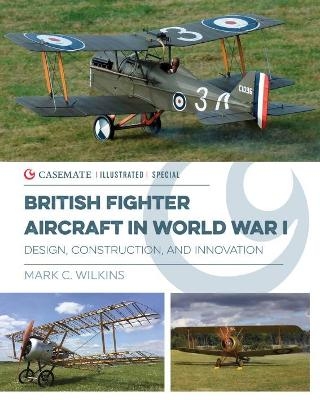
British Fighter Aircraft in WWI
Casemate Publishers (Verlag)
978-1-61200-881-3 (ISBN)
World War I witnessed unprecedented growth and innovation in aircraft design, construction, and as the war progressed - mass production. Each country generated its own innovations sometimes in surprising ways - Albatros Fokker, Pfalz, and Junkers in Germany and Nieuport, Spad, Sopwith and Bristol in France and Britain.
This book focuses on the British approach to fighter design, construction, and mass production. Initially the French led the way in Allied fighter development with their Bleriot trainers then nimble Nieuport Scouts - culminating with the powerful, fast gun platforms as exemplified by the Spads. The Spads had a major drawback however, in that they were difficult and counter-intuitive to fix in the field. The British developed fighters in a very different way; Tommy Sopwith had a distinctive approach to fighter design that relied on lightly loaded wings and simple functional box-girder fuselages. His Camel was revolutionary as it combined all the weight well forward; enabling the Camel to turn very quickly - but also making it an unforgiving fighter for the inexperienced. The Royal Aircraft Factory's SE5a represented another leap forward with its comfortable cockpit, modern instrumentation, and inline engine - clearly influenced by both Spads and German aircraft.
Each manufacturer and design team vied for the upper hand and deftly and quickly appropriated good ideas from other companies – be they friend or foe. Developments in tactics and deployment also influenced design - from the early reconnaissance planes, to turn fighters, finally planes that relied upon formation tactics, speed, and firepower. Advances were so great that the postwar industry seemed bland by comparison.
Mark C. Wilkins is an historian, writer, lecturer, and museum professional. He has been director and curator of both the Cape Cod Maritime Museum and The Atwood House Museum and has worked for the Smithsonian Institution & Mystic Seaport. Mark is a published author of books and articles relating to maritime and aviation history. Mark has been a contributor to Smithsonian’s Air & Space Magazine and Aviation History magazine. He has an A.L.M. in history from Harvard University and was the historical consultant and producer of aerial effects for the Lafayette Escadrille documentary film. He serves on the Board for the Patuxent River Naval Air Museum.
Introduction
The British Aircraft Industry
The British and Colonial Aeroplane Company (B&CAC)/Bristol
The Royal Aircraft Factory
Aircraft Manufacturing Company (Airco)
A. V. Roe & Company (Avro)
Sopwith Aviation Company
Engines and Props
Conclusion
Appendices
Notes
Bibliography
Index
| Erscheinungsdatum | 03.06.2021 |
|---|---|
| Reihe/Serie | Casemate Illustrated Special |
| Zusatzinfo | 250 photos, profiles, and diagrams |
| Sprache | englisch |
| Maße | 203 x 254 mm |
| Themenwelt | Geschichte ► Allgemeine Geschichte ► Neuzeit (bis 1918) |
| Geisteswissenschaften ► Geschichte ► Regional- / Ländergeschichte | |
| Sozialwissenschaften ► Politik / Verwaltung | |
| Technik ► Fahrzeugbau / Schiffbau | |
| Technik ► Luft- / Raumfahrttechnik | |
| ISBN-10 | 1-61200-881-X / 161200881X |
| ISBN-13 | 978-1-61200-881-3 / 9781612008813 |
| Zustand | Neuware |
| Haben Sie eine Frage zum Produkt? |
aus dem Bereich


